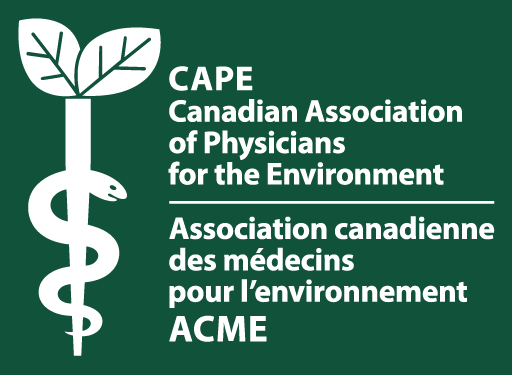Think adverse environmental effects affect people equally? Ask these women
OPINION
By Dr. Jane E. McArthur and Jennifer Beeman
This article was originally published in The Hill Times. It is published here with permission.
Although the passage of time this past year sometimes felt like a stopped clock, the conditions of the Covid-19 pandemic have provided us with a timely history lesson and an opportunity to shape the future.
Covid-19 has made clear how environments are connected to health by showing how individual actions cannot address all the conditions around us. The pandemic has also revealed the health effects of government policies and that specific populations of people disproportionately experience environmental health effects. Seniors, Black, Brown and Indigenous peoples, workers and children are disproportionately impacted by the pandemic, illustrating health is nested in our living and working conditions.
In 1999, Parliament passed the Canadian Environmental Protection Act (CEPA), which regulates critical environmental issues directly related to health. A 2017 parliamentary review produced 87 recommendations to strengthen the Act. And this week, we welcome the introduction of a bill to modernize CEPA which can begin to address gendered dynamics of toxic exposures.
Women, children, and racialized people’s health are particularly vulnerable to adverse environmental effects for biological and socioeconomic reasons. We can use breast cancer as an example of how these differential impacts play out.
Breast cancer’s typical narratives focus on individuals and their behaviours as the source of their risk. This framing removes women from their homes, jobs, communities, institutions and societies where risks are borne, decontextualizing and depoliticizing the issue.
At the Ambassador Bridge in Windsor, Ontario, women are diagnosed with breast cancer 16 times more than other residents. The Bridge is located in an industrial air shed. It is the busiest border crossing in North America, where over 20,000 diesel trucks and other vehicles cross each day. The environment contains high levels of air pollution and exposure to identified breast carcinogens.
Dr. Jane McArthur of the Canadian Association of Physicians for the Environment recently completed research with women workers from the Bridge. Modern-day “just in time” manufacturing and higher volumes of truck traffic increases exposure to known and suspected breast carcinogens. Women described how they feel powerless to control their exposures associated with breast cancer development, including air pollution, diesel exhaust, radiation, and chemicals. Women’s knowledge of their exposures points to the need for more robust and updated legislative and regulatory protections.
Breast Cancer Action Quebec’s Jennifer Beeman educates women on toxic chemicals linked to breast cancer risk found in items women handle every day. Recently, important attention has been given to BPA and BPS in the thermal paper used for receipts. Research shows BPA levels in cashiers’ bodies are more than doubled from the beginning to the end of their shifts. According to the Endocrine Society, research shows that BPA can contribute to breast cancer cell progression and diminish drug treatment efficacy. The commonly used substitute BPS potentially increases the aggressiveness of breast cancer. Hundreds of thousands of cashiers handle these papers continually during their shifts.
The synergistic effects of chemicals are making matters worse. Hand sanitizers contain ingredients that dissolve BPA. This effect makes it easier to penetrate the skin while also increasing its ability to absorb the chemical. Research has shown that using hand sanitizer with dermal penetration enhancing chemicals while handling thermal receipt paper coated with BPA dramatically increases BPA in the body, especially in women. Women’s skin permeability might allow more significant transdermal transport of BPA relative to men.
The environmental exposures by women at the Bridge and the over 400,000 cashiers and 750,000 retail salespeople in Canada handling BPA and BPS laden receipts while using hand sanitizer between each client show us that focusing on individual choices is an insufficient approach to health protection. Preventing breast cancer risk through lifestyle choices alone ignores the fact that we don’t all share equal access to the same lifestyle.
Women working at the Bridge and the female cashiers across Canada are often from populations experiencing multiple forms of oppression. Inadequate protective and preventive actions on toxics are environmental health and justice issues.
This government promised in 2019 to modernize CEPA, and the introduction of a Bill to follow through on that promise is welcomed. A feminist, environmental health lens illustrates today’s exposures disproportionately impact women and other populations made vulnerable by social environments. CEPA modernization with current-day realities must be a priority.
A bill to reform CEPA that recognizes the right to a healthy environment, defense of populations made vulnerable, current evidence of health risks related to chemical and other exposures, gendered and racialized inequalities in toxic exposures, and the precautionary principle is critical now.
We cannot allow a failure of this history test by ignoring the lesson of the linkage between environments and health. Control of toxic substances and protecting the right to a healthy environment are critical needs now and for the future.
Jennifer Beeman is Executive Director at Breast Cancer Action Quebec (BCAQ), and Dr. Jane E. McArthur is Toxics Campaign Director at the Canadian Association of Physicians for the Environment (CAPE).
